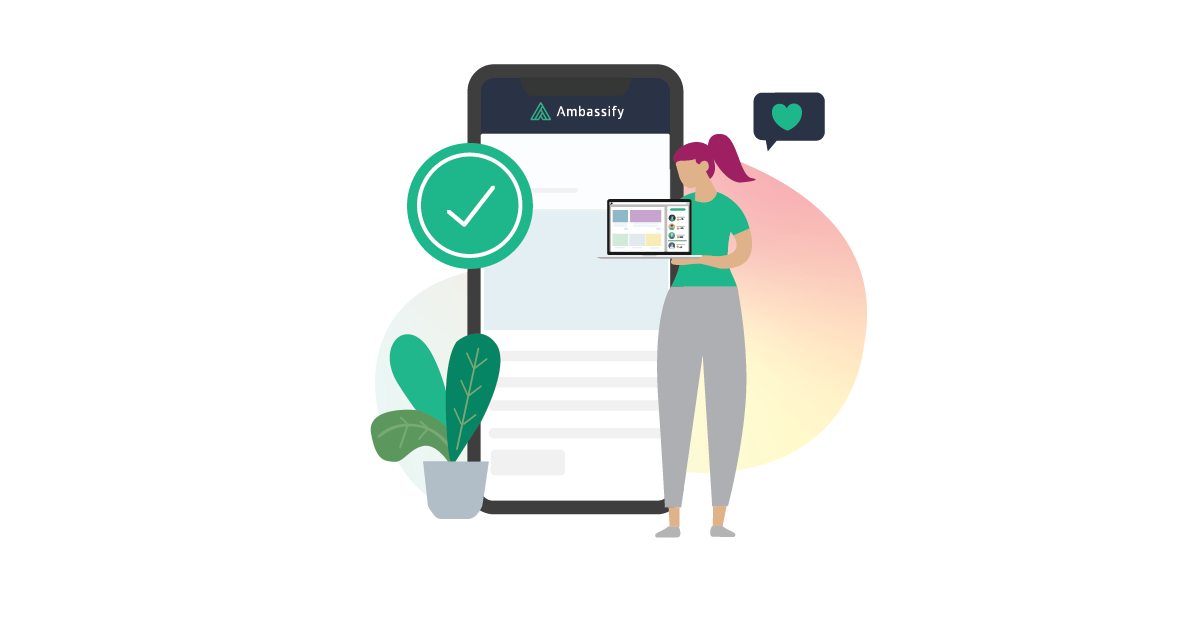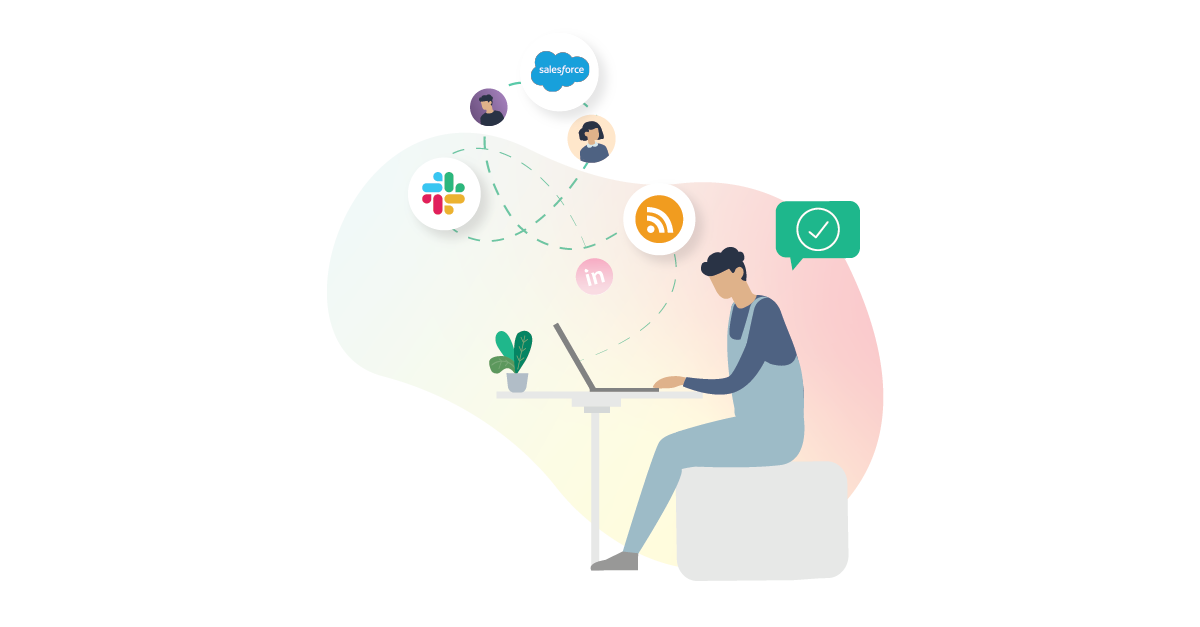6 Must-Haves for a Solid and Reliable Advocacy Software

Deciding to launch an employee advocacy program is the first big step. The second step is making sure you are optimizing that program and achieving the best results: having the support of solid advocacy software will bring you several benefits, including the automation of all processes, gamification, and a customer support team ready to jump on every issue and guiding you along to achieve success. To find the best advocacy software for you business, follow this checklist of 6 must-have characteristics.
Content marketing is a very important part of any marketing strategy: content is king, and if you want to maximize its impact then you can’t leave anything to chance. having a strategy in place is crucial here, and the best strategy to amplify your content online, increase engagement, and ultimately generate more leads, is employee advocacy.
Deciding to launch an employee advocacy program is the first big (and, mind you, very important) step. The second step is making sure you are optimizing that program and achieving the best results: having the support of solid advocacy software will bring you several benefits including the automation of all processes — from signing up employees to the program, announcing new campaigns and initiatives, tracking engagement, activity, performance and important metrics such as your ROI.
But as someone who is just getting started with employee advocacy the first task at hand might be zooming in on what makes an employee advocacy platform a solid and reliable advocacy software.
We have conducted an analysis to identify the 6 must-have characteristics essential to advocacy software, features you shouldn’t miss out on, value-based advantages, and so on. Let's dive right in!
1. Advocacy software should be user-friendly

This is by far the number one thing to look out for. A tool that’s intricate and complicated to navigate through risks putting your users off from the start, which is why you want to go for the opposite. With advocacy you're not just introducing a new software but also a new strategy, a new habit you want your employees to pick up on.
Make it as simple as possible to make sure it quickly becomes part of their routine, without discouraging them or seeming to them like a cumbersome task they have to do. If training your employees to use the tool appears like a never-ending process, you can count that as your first red flag.
Great software is intuitive, simple, and straightforward. And that goes for both admins and end-users, of course. No steep learning curve, a transparent interface to interact with, and an intuitive and user-friendly way of working are going to ensure the highest rate of success.
2. Advocacy software should have a solid reporting system
A lean and efficient reporting system will help you maximize the potential of your advocacy program, and give you an idea of how well it is performing. being able to measure important metrics such as your ROI, measuring attribution, etc. ais one of the main reasons for getting advocacy software in the first place (rather than having to manually file spreadsheets to keep everything up to date). Which is why this function is incredibly important. More specifically, your advocacy software should allow you to:
 Measure community and ambassador activity. For example, identifying your most active advocates, best-performing campaigns, the content your community is eager to consume, and the most effective messages.
Measure community and ambassador activity. For example, identifying your most active advocates, best-performing campaigns, the content your community is eager to consume, and the most effective messages.
 Measure the outcomes. Discover the reach that your advocacy program enabled, how many clicks your advocates gathered, the traffic generated organically through your employees' advocacy efforts, etc.
Measure the outcomes. Discover the reach that your advocacy program enabled, how many clicks your advocates gathered, the traffic generated organically through your employees' advocacy efforts, etc.
 Measure the ROI. We've mentioned this one already, but it's a pretty important one. Make sure your advocacy software allows you to estimate how much you saved on your monthly and yearly ad spend, get a clear view of the monetary value of your advocacy program, and what kind of value the program has for your company.
Measure the ROI. We've mentioned this one already, but it's a pretty important one. Make sure your advocacy software allows you to estimate how much you saved on your monthly and yearly ad spend, get a clear view of the monetary value of your advocacy program, and what kind of value the program has for your company.
Within these three categories, a few metrics may come in handy. Take a look at those most interesting ones, according to Ambassify admins:
- Engagement value. An estimation of the monetary value generated by your members' interactions on Ambassify.
- Earned Media Value. An estimation of how much your clicks would cost using traditional advertising.
- Total network. The number of shares multiplied by the number of your members' followers, friends, connections, etc., on social media, so the number of people who could have seen the post.
- Reach. The number of individual users who saw your post at least once.
- Impressions. The total number of times your post was shown, including multiple views by the same person.
- Engaged and active members. The number of members that viewed, interacted with, liked, or commented on a campaign.
- Most active campaigns. Which campaigns are receiving the most interactions? How is your content performing? Which content should you create more of?
What we've gathered from many of our admins, is that it's not always just the stats that prove the success or even the efficacy of their advocacy programs. It's a feeling too — seeing how involved the employees are and feel is also a very important factor in this equation. Results will follow in the long run if you build a solid base at the start of the program.
3. Advocacy software should allow you to personalize the ambassadors' experience
Employee advocacy is a great social selling tool, but it’s not a one-size-fits-all kind of tool. If you want it to deliver the results you are looking for, you should think about how you can make it unique for each ambassador — aka, personalize their experience.
Every campaign, initiative, and share within your program should be customized to resonate with as many individual ambassadors as possible. Which is why it is a good idea to diversify the content you put out and provide different angles so as to match the experience of as many of your employees as possible.
Personalize the content you want your employees to share, and transform their experience into authentic engagement.
No one likes to see their feed clogged up with the same post shared by 20 different people, right? That’s why, for example, within Ambassify you can create different versions of the same post within one campaign, you can configure suggested captions for each post that employees can choose from when posting on their own channels, etc.
Diversity plays a big role here. You want to dress your message in different jackets every time, to let your campaign speak to your teams first, and to your and their audience.
Helan customer testimonial for Ambassify: their personalized recruitment posts
4. Reliable advocacy software should offer stellar customer support
An advocacy software solution is not a one-time purchase. It’s a service that is provided to you constantly, continuously. Customer support plays a huge role here, not only in solving small issues that pop up along the way but also in guiding admins in the setup, development and maintenance of the employee advocacy program.
No matter how many issues you’re encountering in setting things up, how many tips you need for onboarding more employees, or how often you need help for customization, there’s always a team ready to jump on it.
Setting up your platform, onboarding your employees, and providing constant guidance and support to make sure your program is bound for success — that’s what great customer assistance can do. And believe us, knowing you can count on them will be a huge life-saver and an even bigger incentive to take risks.
When it comes to technology, no software is bulletproof, but it does help to have a responsive team to reduce the impact of any kind of outage and get you back on your feet in no time.
5. Advocacy software should provide segmentation options

You don’t need to ask or expect every single ambassador to share every single thing. That's unrealistic, first of all, and will most likely not happen. People will share what they feel comfortable sharing in terms of frequency and amount, and they will share what resonates with them.
We’ve already mentioned how important it is to personalize the content of your campaigns, but let’s talk about segmentation. When you personalize posts, campaigns, or initiatives, make sure you aim your 'asks' towards specific segments of the audience, those you know are most likely to engage with that specific piece. That will make sure you're maximizing the impact and the performance of that campaign.
So for example, send your thought leadership posts to your Marketing team; aim your case studies and sales enablement to your sales team; vacancies? Those go directly to your most active users in the department you’re trying to fill.
The handiest and most flexible platform solution will be equipped with a series of features you may be tempted to overlook, but that you can really come to rely on in the long run.
Let the platform take away that big chunk of workload and, in turn, you’ll get to shape your ambassadors’ experience the way you want.
6. Advocacy software should offer gamification and rewards
This may sound like something that doesn’t fit in with your company culture and the objectives that you have set for yourselves, and that is totally fine. Gamification is not essential for your program, but top-of-the-class advocacy software will offer you extensive (and optional) gamification features.
So, in case you do want to include gamification in your software solution, here’s how your community will benefit from it:
- Gamification makes the experience more enjoyable for the users. I mean, who doesn’t like some friendly competition, right? Tasks to complete, a point system, and a leaderboard will spice things up. This will generate a ton of engagement and prevent users from feeling like they’re doing extra work, and also serve as a motivator in the long run, once the thrill of the new toy has passed, employees will still feel like the experience is fun and rewarding.
- Rewards allow you to show recognition to your employees. Having a recognition system in place is a very valuable way to create and build a collaborative relationship with your employees. ambassadorship is voluntary, it's based on the commitment, passion, and dedication your employees have toward your company. Showing them how much you value those efforts should never fade into the background but have a prominent role in how you handle your program.
If you opt for advocacy software that allows you to gamify your environment and customize your platform to fit your work culture, you’ve hit the jackpot.
And there you have it! If your advocacy software solution ticks all of these boxes, then you can be sure that the tool will do all the heavy lifting for you, which is what you want from any software out there.